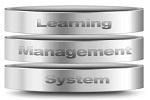Implementing modern technology in education is essential. Over the years, many things have changed, and with it, technology has advanced to new levels that have made additional forms of learning possible.
Remote learning is now a new normal and it’s up to us to make sure it is as functional, structured, and engaging as possible. Let’s take a look at some ways modern technology can enhance remote learning.
Video Chat Conferences
Using video chat conferences is an essential part of remote learning. Video chat conference solutions are easily accessible and benefit the process of remote learning in grand ways. There are dozens of video chat solutions that are available for free across many different platforms.
Video chat conferences enhance remote learning because teachers and students can see each other face to face, even if they are miles away. A teacher could even use a portable battery charger to chat hands-on with students while on the move, off the grid, or on location for a more absorbing learning experience. Video chatting education also makes learning accessible to students who may have otherwise had difficulty commuting to a physical school location. And, it also allows students and teachers an opportunity to collaborate with other schools and educational clubs.

Video chat conferences also add great benefit to the modern world because teachers can record their classes. Having a recorded class is massively beneficial. The teacher is able to send out the recording to students who may need extra time to review the material. Or, look back at the video themselves and take note of what they may do differently next time to make the class more interactive.
Classroom Calendar
Implementing organization into remote learning can take your remote learning experience from “What am I doing?” to “This is the best thing that has ever happened to the education system!”. Having a shared classroom calendar can make your transition into remote learning a smooth process.
Schedule and plan your video chat conference times, assignment due dates, digital field trips, one-on-one tutoring sessions, and so much more. With an easily accessible shared classroom calendar, your students will have around-the-clock access to their educational schedules.
If teachers have a website dedicated to their virtual classroom, they can even integrate their shared classroom calendar onto that platform. By providing all of the tools that your student needs in one place, you create a big window for educational success.
Learning Management System
A Learning Management System is a software application used for delivering courses, quizzes, and training programs for students. An LMS is also used for tracking student progress, documenting grades, log-in hours, and reporting data.
Teachers can use an LMS to provide students with a structure-based program by providing all course materials in one common area. This is beneficial to students because it makes their work easily accessible at any time and places all of their course materials in a common area that’s familiar to them. Think about a student rummaging through their bag to find their science homework, but it’s lost in the pile of other papers. With an LMS, your students’ science homework is just one swift click away, under the science class tab.

Screen-Sharing
Screen-sharing can become the new chalkboard. Think of when you were physically in the classroom; how awkward would it have been if you literally just sat there and stared at your students? Yikes! Make screen-sharing an interactive and engaging experience for both students and teachers.
Share your screen to walk your students through problem-solving, give live instruction on task completion, and share resources. Make your classroom presentations trouble-free by screen-sharing and boost your student-teacher engagement.
Virtual Field Trips
Virtual field trips are inclusive, cost-effective, and worry-free. Once upon a time, students who were not physically able to attend field trips would be left out altogether, but fortunately, that is a thing of the past. All of your students can participate in virtual field trips. Virtual field trips are also usually lower cost because transportation and extra lunch fees are taken out of the equation.
And of course, virtual field trips involve far less worry for teachers. No need to do a headcount every five seconds; all of your students are safe and tucked away at home. No permission slip needed! Here are some awesome virtual field trips that are available to you and your students:
- Smithsonian’s Natural History Museum – Tour museum exhibits and see dinosaur fossils; learn about what used to be and what is now.
- Farm Food 360 – Do you love milk, cheese, and eggs? Take a tour and learn about Canadian farming.
- A Planetarium – Learn about space, the galaxy, the stars, and all of the planets.
- The Aquarium – Watch majestic jellyfish and other underwater creatures float through the ocean water.
- Nature Lab – Learn how nature works and what you can do to contribute to a greener earth.
Conclusion
Remote learning is very different from what we are used to. It’s okay to feel anxious if you still haven’t quite figured it out yet. The ideas that you read above are just a few of the awesome ways that you can integrate modern technology into remote learning.
Don’t be afraid of the shift to virtual learning. Most students already know how to use the latest technology; use the fact that your students are tech-savvy to your advantage so that modern technology and remote learning live in unison.